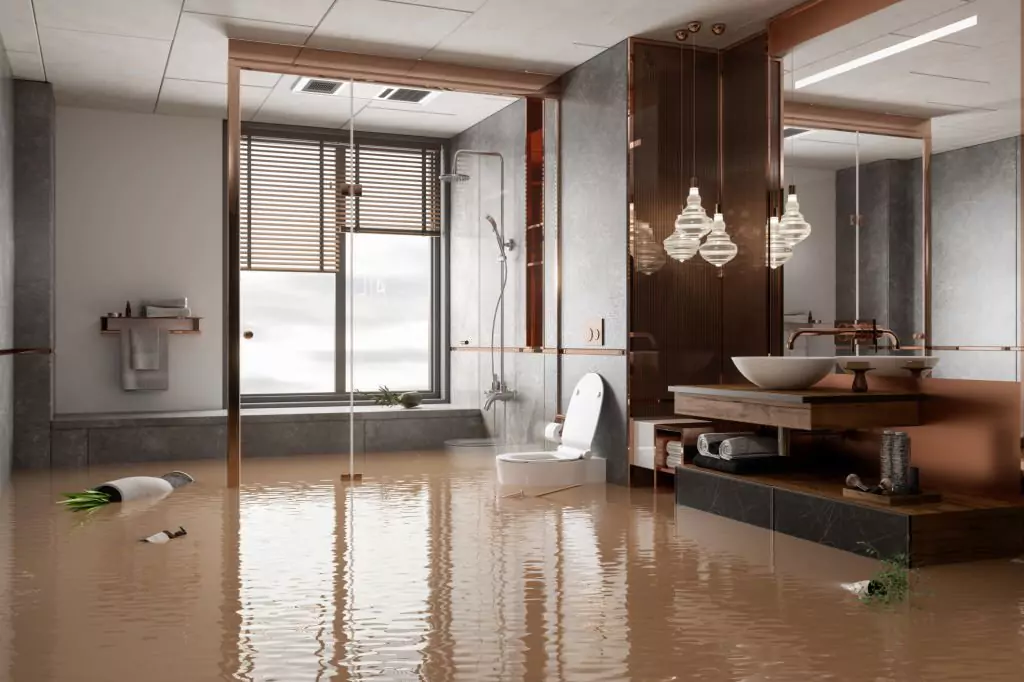Introduction
The restoration industry plays a crucial role in repairing and restoring properties that have been damaged by natural disasters, accidents, or other unforeseen events. From water damage restoration to fire and smoke damage repair, restoration professionals are in high demand. However, launching and running a successful restoration business comes with its own set of challenges and opportunities.

In this article, we will explore the essential steps for starting a restoration business, building a solid business plan, acquiring the necessary tools and equipment, finding reliable suppliers, hiring and training a skilled workforce, navigating legal and insurance requirements, marketing and branding strategies, establishing strong relationships with insurance companies, embracing technology, and the future of the industry.
Getting Started: Essential Steps for Launching Your Restoration Business
Before diving into the restoration industry, it is important to conduct thorough market research to understand the demand for restoration services in your area. This research will help you identify potential competitors and determine if there is a niche within the industry that you can specialize in. Once you have identified your niche, it is crucial to obtain the necessary licenses and certifications required by your state or local government. These licenses and certifications not only ensure that you are operating legally but also give your business credibility and trustworthiness in the eyes of potential clients. Additionally, setting up a business entity such as an LLC or corporation will protect your personal assets in case of any legal issues or liabilities.
Building a Solid Business Plan: Key Considerations and Strategies
A well-crafted business plan is essential for the success of any restoration business. Start by identifying your target market and understanding their needs and preferences. This will help you tailor your services and marketing strategies accordingly. Setting financial goals and projections is another crucial step in building a solid business plan. Determine how much revenue you need to generate to cover your expenses and make a profit. Develop marketing and sales strategies to reach your target market effectively. This may include online advertising, social media marketing, networking with local businesses, and attending industry trade shows. Lastly, create a contingency plan to prepare for any unforeseen circumstances such as a downturn in the economy or a natural disaster that may affect your business.
Must-Have Tools and Equipment for Restoration Professionals
Having the right tools and equipment is essential for any restoration professional. Basic tools such as hammers, screwdrivers, and pliers are necessary for general restoration projects. However, specialized equipment is required for specific restoration services such as water extraction machines, dehumidifiers, air movers, and thermal imaging cameras. Investing in high-quality tools and equipment is crucial as they will not only improve the efficiency and quality of your work but also ensure the safety of your employees and clients. Regular maintenance and replacement of tools and equipment are also important to avoid any breakdowns or accidents on the job.
Finding the Right Suppliers: Sourcing Quality Materials for Restoration Projects
Finding reliable suppliers who can provide quality materials for your restoration projects is crucial for the success of your business. Research and vet potential suppliers to ensure that they have a good reputation and can meet your specific needs. Establishing strong relationships with suppliers is important as it can lead to better pricing, timely delivery of materials, and access to new products or technologies. Negotiate favorable terms and pricing with your suppliers to maximize your profit margins. Additionally, ensure that your suppliers have a reliable system in place for tracking inventory and managing orders to avoid any delays or shortages.
Hiring and Training a Skilled Workforce: The Importance of Team Building
Building a skilled workforce is essential for the success of any restoration business. Identify the necessary skills and qualifications required for each position within your company. When recruiting potential employees, conduct thorough interviews to assess their experience, knowledge, and work ethic.
Provide comprehensive training to new employees to ensure that they are equipped with the necessary skills to perform their job effectively. Ongoing education and training are also important to keep your workforce up-to-date with the latest industry trends and techniques. Fostering a positive and collaborative work environment is crucial for employee satisfaction and retention. Encourage teamwork, provide opportunities for growth and advancement, and recognize and reward employees for their hard work and dedication.

Navigating Legal and Insurance Requirements: Protecting Your Business and Clients
Understanding and complying with local, state, and federal regulations is crucial for the success of your restoration business. Familiarize yourself with the specific regulations that apply to your industry, such as environmental regulations for handling hazardous materials or safety regulations for working at heights. Obtaining the necessary insurance coverage is also important to protect your business and clients in case of any accidents or damages. Liability insurance, workers’ compensation insurance, and property insurance are some of the key insurance policies that you should consider. Implementing safety protocols and procedures is crucial to minimize the risk of accidents or injuries on the job. Maintain accurate records and documentation of all your projects, including contracts, invoices, permits, and any other relevant paperwork.
Marketing and Branding Your Restoration Business: Effective Strategies for Success
Developing a strong brand identity is crucial for standing out in the competitive restoration industry. Create a professional website that showcases your services, expertise, and testimonials from satisfied clients. Invest in search engine optimization (SEO) to improve your website’s visibility in search engine results. Utilize social media platforms such as Facebook, Instagram, and LinkedIn to engage with your target audience and share valuable content related to restoration services. Implement digital marketing strategies such as email marketing campaigns, pay-per-click advertising, and content marketing to generate leads and drive traffic to your website. Additionally, don’t underestimate the power of traditional marketing tactics such as print advertisements, direct mail campaigns, and attending industry trade shows or conferences.
Establishing Strong Relationships with Insurance Companies: Tips for Maximizing Referrals
Insurance companies play a significant role in the restoration industry as they often refer clients to restoration professionals for repairs and restoration services. Building strong relationships with insurance adjusters and agents is crucial for maximizing referrals and growing your business. Provide exceptional service to insurance clients by responding promptly to their inquiries, providing accurate estimates, and completing projects on time and within budget. Communicate effectively with insurance adjusters throughout the restoration process to keep them informed about the progress of the project. Leverage referrals from insurance companies by asking for testimonials or reviews from satisfied clients and showcasing them on your website or social media platforms.
Embracing Technology: The Latest Innovations for Streamlining Restoration Operations
Technology has revolutionized the restoration industry, making operations more efficient and streamlined. Utilize project management software to track and manage all aspects of your projects, from scheduling and budgeting to communication and documentation. Implement mobile apps that allow your team to document and share information in real-time while on-site. Incorporate drones and thermal imaging cameras for accurate assessments of damaged properties, especially in hard-to-reach areas. Explore emerging technologies such as virtual reality (VR) or augmented reality (AR) for visualizing restoration plans or training employees. Embracing technology not only improves the efficiency of your operations but also enhances the overall customer experience.
Conclusion
Starting and running a successful restoration business requires careful planning, strategic decision-making, and continuous adaptation to industry trends and technologies. By following the essential steps outlined in this article, aspiring restoration professionals can position themselves for success in this thriving industry. From conducting market research and building a solid business plan to acquiring the necessary tools and equipment, finding reliable suppliers, hiring a skilled workforce, navigating legal and insurance requirements, implementing effective marketing strategies, establishing strong relationships with insurance companies, embracing technology, and looking towards the future of the industry, restoration professionals can build a thriving business that meets the needs of their clients and contributes to the restoration and revitalization of damaged properties.